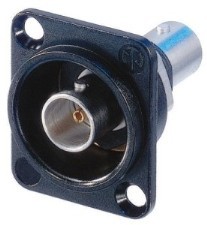

Crimp-ons or Twist-ons? 50 Ohm or 75 Ohm?
When it comes to BNC Connectors how do you decide which type is the best option for you?
In this post we’ll discuss the different types of BNC connectors available in the market, and help you decide which ones are most suitable to your connectivity needs.
Let’s start with a quick overview of what a BNC connector is:
What is a BNC Connector?
A BNC connector, is a small radio frequency connector used for connecting and disconnecting coaxial cables. BNC connectors are most frequently used for coaxial cable connections in television, radio, radio-frequency equipment, computer, media player, stereo speaker, camera, and other data network and audio/video applications that call for a radio frequency connector.
Being easy to install, they ensure a strong connection and are especially handy when you need to combine them with let’s say, an RCA connector that’s connected to a coaxial cable.
BNC is an acronym for Bayonet Neill-Concelman and was named for its bayonet mount mechanism and after its inventors, Paul Neill and Carl Concelman.
What are the different types of BNC connectors?
BNC Crimp-on Connector
Crimp-on connectors are available in 2 piece or 3 piece and are popular amongst most professional installers as they provide strong, secure connections. Agreed, they’re not the easiest to install, but with only two tools (a coax cable stripper and a coax crimping tool), you end up with a high-quality connection that’s worth the extra effort.
BNC Twist-on Connector
Requiring no tools, Twist-on Connectors are a breeze to install. Obviously, you still need a coax cable stripper to strip the cable before you install, but once that is done you can pretty much use your hands to attach the connector to the coaxial cable. Many professional installers believe Twist-on BNC’s don’t provide the same level of reliability that crimp-on or compression BNC’s do, but as long as you trim the cable to the correct length, we believe you can get a fairly secure connection with the Twist-on BNC.
BNC Compression Connector
Compression connectors, available in BNC, RCA and F series connectors provide one of the strongest, durable connections as they offer visual feedback on the cable’s entry point, improved signal impedance resulting in better performance, and simple installation involving compression tools that help reduce signal ingress/egress, prevent moisture penetration and leaks, and ensure high-quality connections and signal reliability.
So, what’s the difference between 50 Ohm and 75 Ohm?
Some people think that there is only one type of BNC Connector, when in fact there are two types: 50 Ohm and 75 Ohm.
The use of each connector depends on the radio frequency used. For example, frequencies lower than 2GHz use 50 Ohm whereas frequencies that are lower than 4GHz use 75 Ohm.
The reason most people think there is only one type, namely the 50 Ohm BNC connector version is because this was the only type used in the past, where it was connected to cables and the difference in the wires wasn’t very noticeable when it came to low frequency connections. In recent years the 75 Ohm type of BNC connector was introduced to deal with connections that call for higher frequency, and it is easily recognized by the missing or smaller dielectric at each of its mating ends.
In terms of application, 50 Ohm BNC connectors are used for audio/antenna transmission and older analog video applications. But for superior performance in audio/video applications like HDTVs, 75 Ohm BNC’s are a must. Nowadays you even have the new HD-BNC’s, also known as mini’s to support reliable HD connections.
Why Neutrik BNC Connectors?
For true HDTV connectivity you can’t go wrong with Neutrik’s 75 Ohm BNC connector, that offers improved shielding, gold-plated ground contact, and is designed for a high frequency HDTV signal up to 4.5 GHz!
As technology improves it calls for connectors that can adapt to rising frequencies and connector shielding becomes a vital aspect to consider when choosing a connector. Also unlike low-quality BNC connectors, Neutrik BNC connectors avoid tilting due to side forces and side pulling issues.
Key Features of Neutrik BNC Connectors:
- “rearTWIST Principle” locking/unlocking mechanism for easy access
- Twisting from the back not front for effortless handling and perfect for recessed bulkheads
- Real 75 Ohm to meet strict HDTV / DVD specifications
- Snug-fit center pin that assures tactile feedback
- Safe shielding and jacket crimping technologies help prevent exposed grounding issues on cable assemblies
- Superior cable protection and longevity
- Large version available for RG 11 cable
- Accurate Swiss-machined brass parts for exceptional resilience
- Color coded boots available in 10 standard colors, including crimp tool and dies for installation
So to conclude, when deciding on the type of BNC connector you want to use question what you are using it for. For HDTV applications you can’t go wrong with a 75 Ohm BNC. Also question how easy it is to install and how reliable you want the connection to be. The last thing you want to do is spend a lot of time attaching the connector to the cable – so make sure you pick the type you are most comfortable using and installing.
